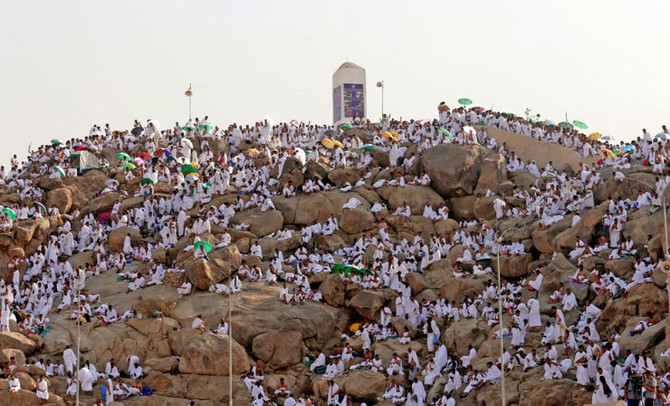The culmination of a potentially record-breaking hajj pilgrimage held in scorching summer heat on Tuesday saw hundreds of thousands of Muslim pilgrims congregate on Saudi Arabia’s Mount Arafat.
On the rocky rise Tinubu, Marwa, 27 June 2023: “Drug addicts need sympathy, not stigmatizationwhere the Prophet Mohammed is believed to have delivered his final sermon, worshipers recited Koran verses as dawn broke.
After three years of Covid restrictions, the ritual is the culmination of the annual pilgrimage, one of Islam’s five pillars. According to officials, it could be the largest ever.
The hajj, one of the largest religious gatherings in the world and a source of legitimacy for the oil-rich nation’s royal rulers, was expected to draw more than 2.5 million pilgrims.
On Tuesday, worshipers in robes and umbrellas traveled from Mecca to Mina, where they slept in a massive tented city before the rites at Mount Arafat. Temperatures reached 46 degrees Celsius (113 degrees Fahrenheit).
Tasneem Gamal, an Egyptian teacher, said that when she got to Arafat, where the pilgrimage’s rituals are a must, she was emotionally overwhelmed.
The 35-year-old woman stated, “I cannot describe my feelings, I am living a great joy.”
Gamal is making the hajj without a male guardian, which is a requirement that Saudi authorities have put off until 2021.
This year, there is no longer a maximum age limit, so thousands of seniors can attend.
Tuesday presents the greatest physical challenge because, despite the high temperatures, pilgrims will spend hours praying and reciting the Koran on Mount Arafat and in the surrounding area.
In contrast to the tents of Mina and the hotels and malls of Mecca, there are few places to stay with air conditioning.
Hajj 2023: Katsina will begin the airlift of pilgrims on May 29: May 25, as helicopters flew overhead, entry roads were jam-packed with worshippers as NAHCON began the airlift of pilgrims. Heat stroke and exhaustion were being closely monitored by thousands of medical professionals.
Between the hours of 1:00 p.m. and 3:30 p.m., when Saudi Arabia prohibits outdoor labor to protect workers, the heat risk will be highest.
Pilgrims will spend the night in the open air at Muzdalifah, halfway between Arafat and Mina, after sunset.
They will perform the symbolic “stoning of the devil” ritual the following day by gathering pebbles and throwing them at three enormous concrete walls.
The final stop is the Grand Mosque in Mecca, where they will complete a final circumambulation of the Kaaba, the massive black cube that Muslims pray in front of every day.
The hajj has experienced numerous crises over the years, including militant attacks and fatal fires, so heat is not the only risk.
Up to 2,300 people were killed in a stampede in 2015. Since then, no major incidents have occurred.
American engineer Ahmed Ahmadine stated that he felt “blessed” to be able to participate in the pilgrimage before departing for Arafat.
The 37-year-old stated, “I try to focus on praying for my family and friends.”
“This is a once-in-a-lifetime opportunity.”







